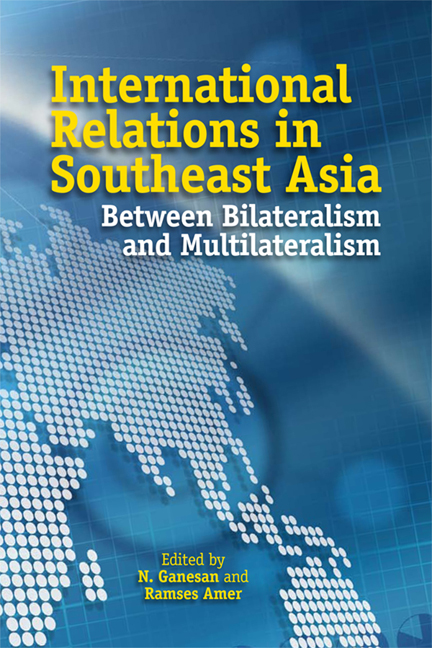Book contents
- Frontmatter
- Contents
- Preface
- List of Abbreviations
- Contributors
- Introduction
- Part I On International Relations
- Part II Case Studies — Mainland Southeast Asia
- 3 Vietnam-Thailand Relations after the Cold War
- 4 Cambodia and Vietnam: A Troubled Relationship
- 5 Thailand-Myanmar Relations: Old Animosity in a New Bilateral Setting
- 6 Thailand-Malaysia Bilateral Relations
- Part III Case Studies — Maritime Southeast Asia
- Conclusion
- Index
3 - Vietnam-Thailand Relations after the Cold War
from Part II - Case Studies — Mainland Southeast Asia
Published online by Cambridge University Press: 18 November 2017
- Frontmatter
- Contents
- Preface
- List of Abbreviations
- Contributors
- Introduction
- Part I On International Relations
- Part II Case Studies — Mainland Southeast Asia
- 3 Vietnam-Thailand Relations after the Cold War
- 4 Cambodia and Vietnam: A Troubled Relationship
- 5 Thailand-Myanmar Relations: Old Animosity in a New Bilateral Setting
- 6 Thailand-Malaysia Bilateral Relations
- Part III Case Studies — Maritime Southeast Asia
- Conclusion
- Index
Summary
In many respects, Thailand holds a special place in Vietnam's policy toward Southeast Asia. Vietnam and Thailand are major countries of mainland Southeast Asia. The geographical proximity has made Thailand most sensitive to developments in Indochina to which Vietnam attaches a special importance. In addition to this consideration, the relationship between Vietnam and Thailand has always been the barometer of that between Vietnam and ASEAN countries, especially before Vietnam joined the Association. Maisrikrod noted that “regional order in Southeast Asia during most of the 1980s was centred around the Thai-Vietnamese relationship.” Soon after the Vietnam War ended, Vietnam and Thailand established diplomatic relations, in August 1976. Relations between the two countries however fell to the state of hostility as Thailand became the ASEAN front-line state to oppose the so-called “Vietnamese occupation of Cambodia”. Since the end of the Cold War, relations between Vietnam and Thailand have reflected the general trend toward greater regional cooperation. In the 1980s the two countries began to rebuild a rounded relationship, which has been described by the Vietnamese side as “friendly and better than ever before”, and by the Thais as “mutually productive and beneficial” based on “friendship, trust, and mutual respect”.
Many reasons have been provided to explain the positive movement in Vietnamese-Thai relations. This chapter argues that the improvement in relations was a result of a combination of the relaxation of international and regional tensions, a comprehensive course of reforms in Vietnam, and changes in Thailand's foreign policies. Above all, however, the changes in foreign policy priorities in Vietnam helped start a chain reaction that worked toward the betterment of bilateral relations. Furthermore, the regional frameworks in which both countries are involved helped to consolidate this bilateral relationship. Last but not least, increased interactions and greater understanding at the people-to-people level has also contributed to good relations between the two countries. The combination of these factors suggest that the two countries can enjoy conditions for long-lasting friendly relations. Both realist and constructivist approaches should feel comfortable with these factors in providing explanations for the current and future state of relations.
- Type
- Chapter
- Information
- International Relations in Southeast AsiaBetween Bilateralism and Multilateralism, pp. 67 - 91Publisher: ISEAS–Yusof Ishak InstitutePrint publication year: 2010

